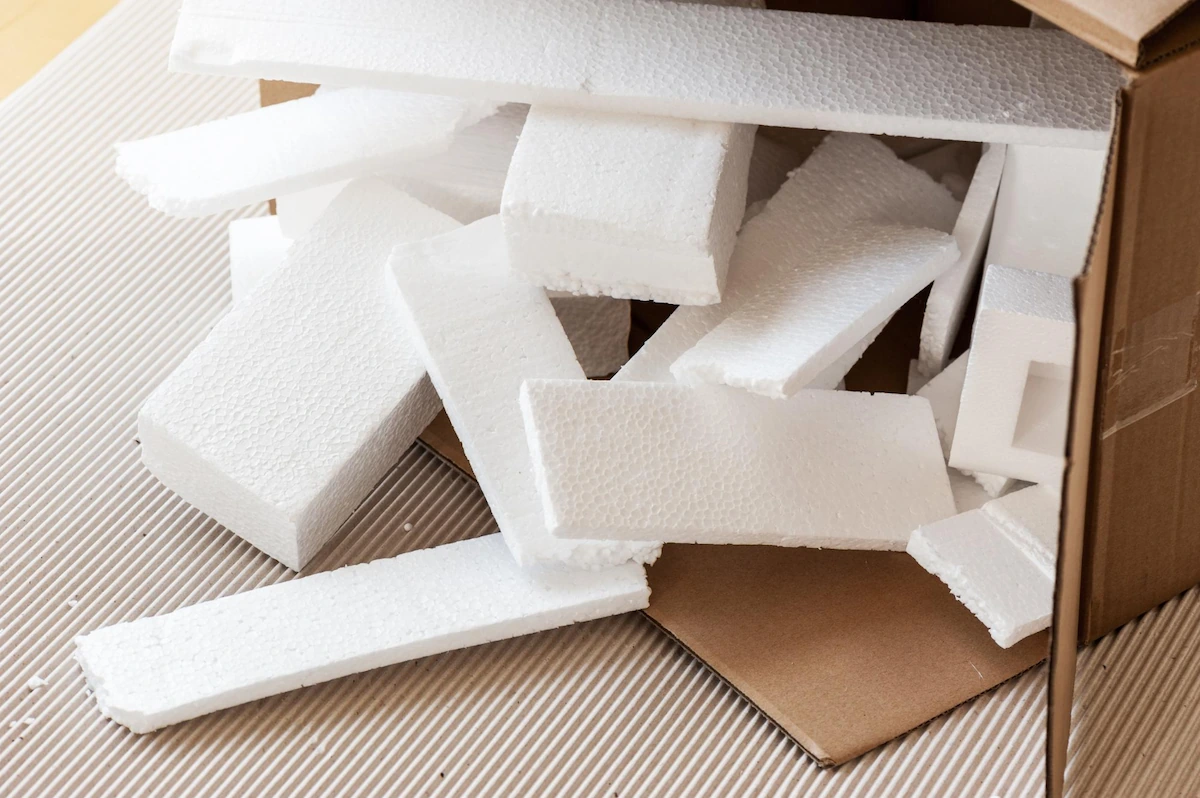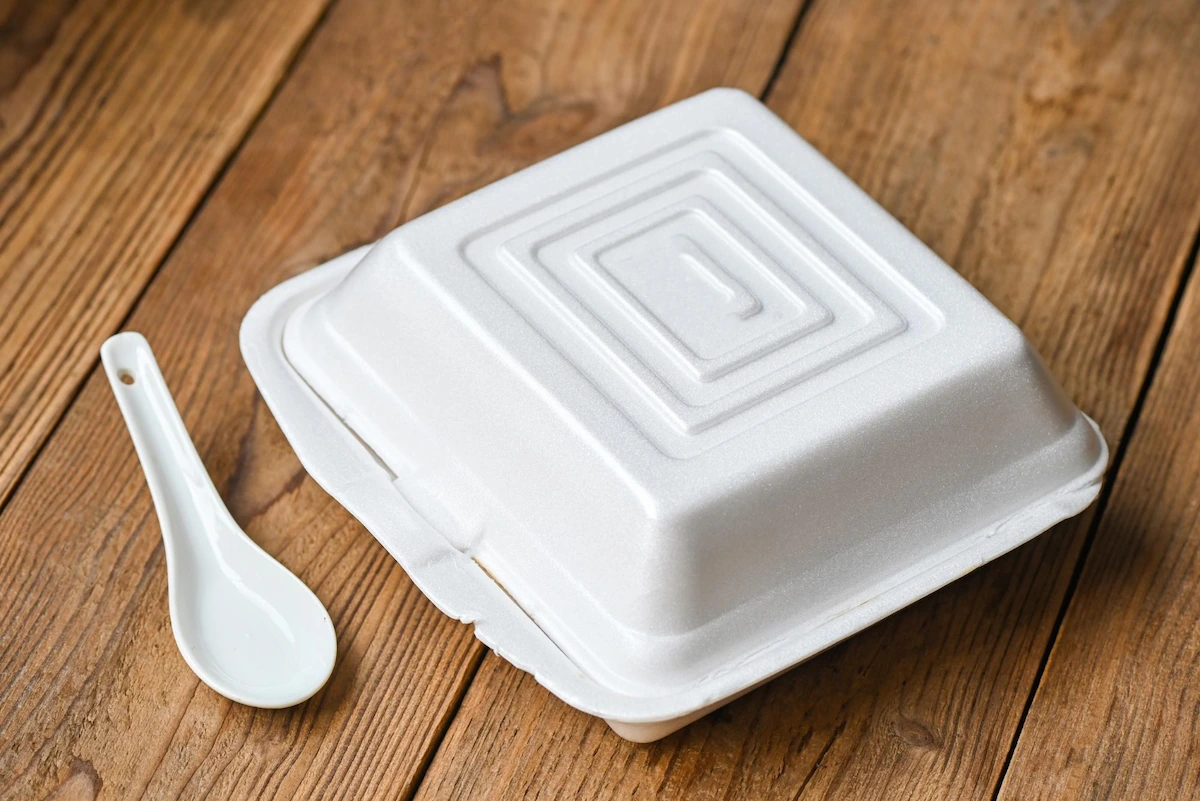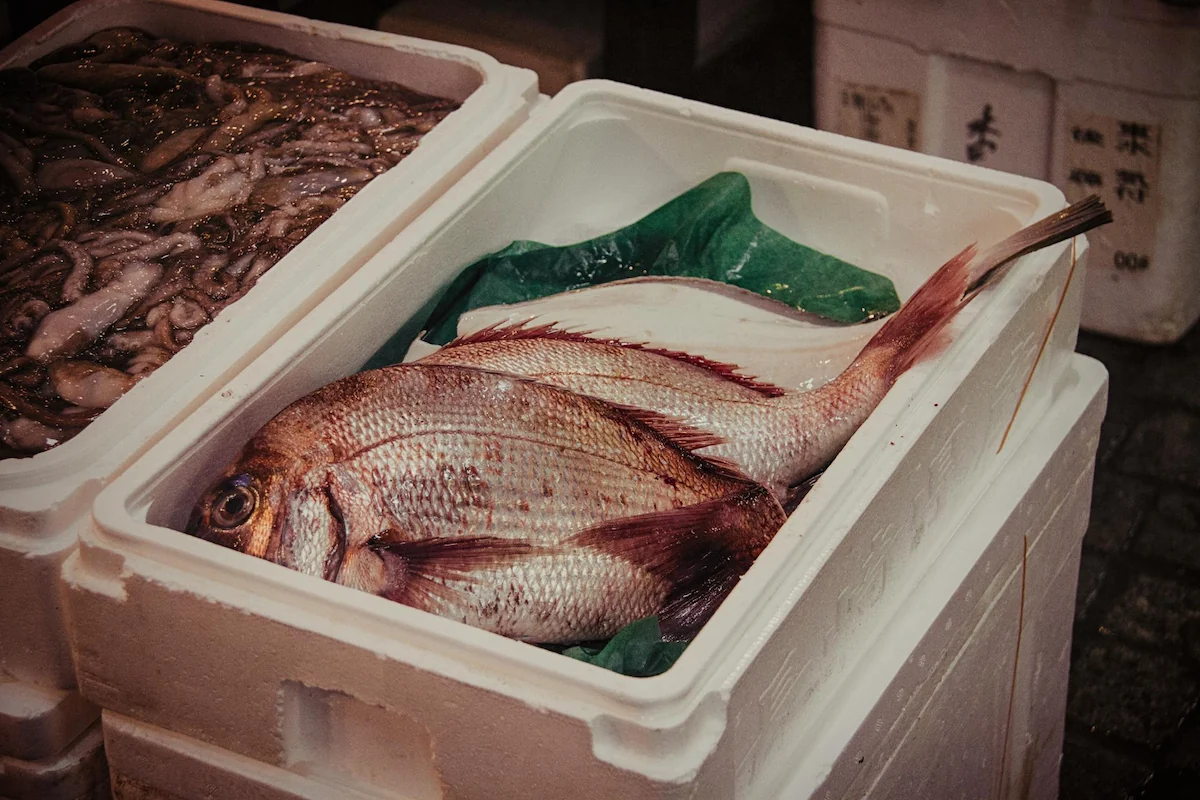
15-10-2025
Polystyrene: Uses, Properties, Types, and Differences to PP
When we discuss daily synthetic materials, you may be familiar with polystyrene plastics. Polystyrene is a type of plastic used to create Styrofoam.
This article explores the characteristics and benefits of polystyrene (PS), including its properties. Therefore, read this article until the end to learn more!
What Is Polystyrene (PS)?

Polystyrene is a thermoplastic that can melt at 210 degrees and remains solid at room temperature. This thermoplastic property makes it easy to mold when it melts and solidifies in the cooling process.
Polystyrene (PS) is derived from the polymerization of styrene monomer molecules. This polymer can be shaped into foam, rigid plastic, and film. Some examples of PS are food-grade styrofoam, styrofoam cooler boxes, and personalized foam for electronics packaging.
Although polystyrene tends to be flexible, it can also be brittle and sensitive to sunlight. It is also sensitive to high temperatures, at which point it will soften before eventually melting.
The advantages of polystyrene include its ability to act as a good electrical insulator and its resistance to acids and bases. Furthermore, polystyrene can be recycled due to its thermoplastic properties, allowing it to be melted down and reused.
Read also: What Is Plastic Made of? Here Are the Materials & Process
The History of Polystyrene
Polystyrene was initially created by a German apothecary named Eduard Simon in 1839, but he did not realize the significance of the experiment he had conducted. At the beginning of the 20th century, a German alchemist named Hermann Staudinger acknowledged the experiment and conducted further research to understand its characteristics.
PS was first used in the 1930s by a German chemical company called I.G. Farben. PS was used to make brushes and household appliances. In 1941, the American company Dow Chemical developed styrofoam, also known as extruded polystyrene.
The company continued to develop PS until 1954, when Dow Chemical successfully created water-resistant and lightweight PS for various applications.
The Properties of Polystyrene

Polystyrene has several properties that make it different from other plastics, such as:
- Has a low melting point and a glass transition temperature of 90–100 degrees Celsius.
- It can become colored or transparent.
- Brittle and solid (can crack under pressure).
- It can withstand stretching forces to a certain extent.
- Very light.
- It can isolate heat and sound.
- Malleable.
- The price is affordable.
- Low absorption capacity.
- Reasonably resistant to chemicals.
Read also: Get to Know Olefins & the Uses in the Petrochemical Industry
Types of Polystyrenes
Polystyrene is categorized into some groups regarding the use and purposes, such as:
1. High Impact Polystyrene (HIPS)
HIPS is made of rubber and polystyrene, which makes it both flexible and strong. As a result, HIPS has better impact resistance, making it suitable for toys and spare parts.
2. General Purpose Polystyrene (GPPS)
GPPS is the most basic polystyrene product, making it more fragile than other PS plastics. It has a texture similar to glass, is transparent, resistant to high temperatures, but not resistant to impact. GPPS is usually used to create food containers and lab tools.
3. Syndiotactic Polystyrene (SPS)
SPS is a clear polystyrene that is resistant to heat and corrosion. SPS is also more affordable. Yet, it is very brittle like GPPS.
4. Expanded Polystyrene (EPS)
EPS is a lightweight polystyrene made by adding an expansion agent to polystyrene resin, allowing it to expand when exposed to high pressure and temperature. EPS is impact and vibration resistant, making it suitable for use as insulation, vibration damping, and soundproofing. EPS is also insoluble in water, making it resistant to moisture.
Uses of Polystyrene

Thanks to its flexibility and sound insulation, polystyrene (PS) is widely utilized in many industries, such as:
1. Housewares
Polystyrene is a material commonly found in air conditioners, refrigerators, microwaves, vacuum cleaners, ovens, and blenders. PS is used because it is durable, more economical, and does not react with other materials.
2. Automotives
PS, whether solid or foam, is often used to make car parts because it can absorb sound and energy. It can also be found in special car seats for children.
3. Electronics
PS is also used to manufacture television components, computers, and other technological devices, particularly to enhance functionality, aesthetic appeal, and shapes that cater to specific needs.
4. Insulations
Polystyrene is known for its excellent insulating properties. As a result, PS is often used in food packaging to extend the shelf life of food.
Lightweight polystyrene is also used in roofing, walls, refrigerators, and industrial cooling facilities because it is waterproof, durable, and does not readily react with other materials.
5. Packagings
PS is also often used to package goods for shipping because it is lightweight and impact-resistant. It is also commonly found in egg cartons, which are designed to fit the shape of eggs so that they do not break. The most common applications of PS are food containers and cups.
6. Medical Equipment
Much medical equipment is also made from PS, including diagnostic components, test tubes, petri dishes, and other items. This is because PS-based medical products are more transparent and easier to sterilize.
7. Plastic-Injected Print
PS is used in the injection molding of plastics, both in solid and foam form. Solid polystyrene injection molding has low shrinkage, making components less prone to warping. Additionally, polystyrene can accurately mold complex component design details.
It is also used in structural foam molding, a process that combines injection molding with a blowing or foaming process before the material is injected into the mold. This process produces rigid and lightweight components.
The Differences Between Polystyrene (PS) and Polypropylene (PP)
Many people consider polystyrene and polypropylene as one type of plastic due to their similar roles in household production and their shared polymer properties. Yet, PS and PP have several differences. PP is more resistant to almost any damage. It is also more durable to sunlight and organic solvents.
Moreover, PP has better durability than PS and is more versatile. On the other hand, PS has advantages in the injection molding process. Because PP has a low boiling point, it is less effective for this process.
PS also has a lower shrinkage rate, so components made from it are more precise, adhering closely to the design. Even so, they are economical and practical for various sectors.
That concludes the information about polystyrene you can learn. PS is a type of plastic commonly found in everyday items. It is made from styrene monomer, an aromatic hydrocarbon with a purity of greater than 99.8%.
Regarding styrene monomer, Chandra Asri Group, a leading chemical, energy, and infrastructure solution company in Southeast Asia, provides styrene monomer for the production of polystyrene, EPS, Styrene Butadiene Rubber (SBR), and other related products.
The final products of styrene monomer include automotive parts, food containers, electronic components, building materials, and many other applications.
So, fulfill your styrene monomer needs with Chandra Asri Group!
Read also: What Is Propylene? Check the Benefit & Safety Information